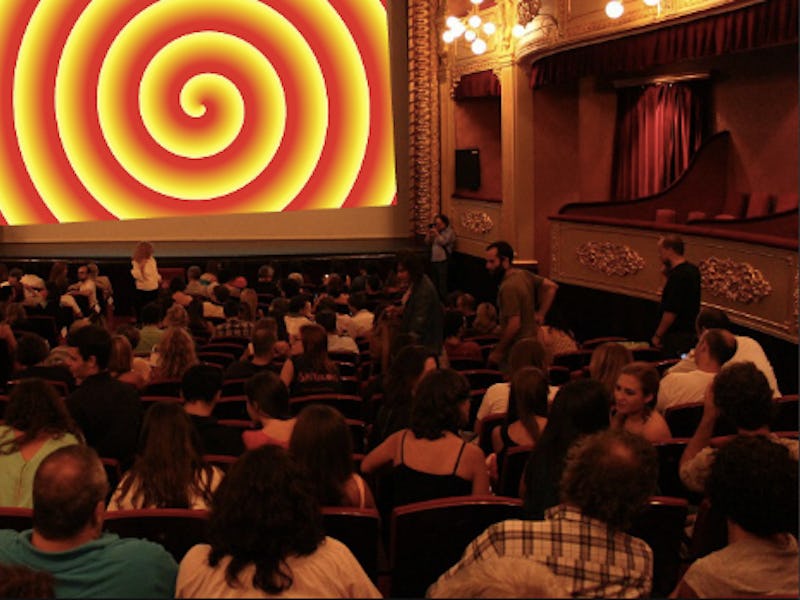Making movie trailers is an art — one that can determine whether a film will tank or thrive. New research, however, proves it’s a science as well. How memorable a movie trailer is and how much money that movie will eventually make can be predicted and perfected by brain scans, a team of neuroscientists argue in a new paper. “Neural similarity,” they write, can help design opiates for the masses by guiding trailer editors to focus on the factors that ignite brain waves.
In the Journal of Consumer Research, neuroscientists Sam Barnett and Moran Cerf explain that they were able to connect brain activity to subsequent box office success through the use of portable electroencephalography (EEG) systems. As 58 subjects watched 13 movie trailers across several different genres, the researchers used the EEG systems to measure their brain activity. After the brains were scanned, the scientists analyzed the similarities in activity across the different brains, which together constitute “cross-brain correlation.”
Patterns of brain wave activity that were shared among all participants could be pinpointed to specific elements of a trailer: recognizable actors, minimal dialogue, simple visuals, and variation in images. Brain activity, the scientists explain, is a sign of greater engagement with the material. So, when they found that neural similarity reached a peak when viewers watched the trailer for X-Men: Days of Future Past, they took it to mean that people were the most into watching that trailer.
"Mr. Peabody and Sherman" performed the worse in this study.
In a follow-up study, the researchers found that the trailers that induced neural similarity were linked to the films that made the most money when they actually debuted. Specifically, movie trailers that corresponded to high levels of neural similarity within the first 16 to 21 seconds ended up earning the most in ticket sales. “First impression engagement,” as the scientists call it, is an important thing for editors to pay attention to; for example, they don’t want to recreate the scenario in the Muppets Most Wanted trailer, which only induced neural similarity in its second half. If the editors had EEG data of their audience on hand, they could have cut the trailer differently, perhaps leading to higher ticket sales.
“We can use this method to measure the effectiveness of any advertisement, speech, lecture, song — anything you can think of where memory and engagement matter,” Cerf said in a statement. “And we can do it more accurately than traditional methods.”
Using psychoanalytical techniques to manipulate consumers into making decisions is at the crux of motivational research, so the idea that certain elements of a trailer that appeal to the subconscious could be tweaked to result in greater cash flow isn’t a brand new one. But the new method outlined in the paper could be the most reliable money-maker; instead of throwing in “hidden persuaders” hoping that viewers will connect, Hollywood executives can tell with certainty what exactly works with brain scans.
